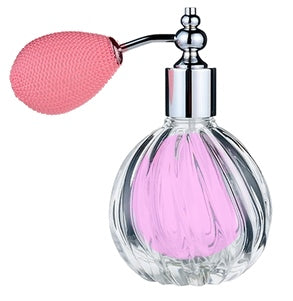Chemicals to avoid - Artificial fragrances, dyes and colors
Artificial fragrances, Dyes and Color
Primary function – scenting and adding color (lipsticks, blushes, foundation etc)
 Fragrances fly under the radar. Most personal care products will list one ingredient called “fragrance” to identify the sum total of all those chemicals that make up the scent. When listed as fragrance, suffice it to say that the scent is artificial and not natural. Artificial fragrance is cheaper than naturally derived ingredients that impart scent such as essential oils. If naturally derived scents were used, then they would be mentioned and would also drive up the price of the product.
Fragrances fly under the radar. Most personal care products will list one ingredient called “fragrance” to identify the sum total of all those chemicals that make up the scent. When listed as fragrance, suffice it to say that the scent is artificial and not natural. Artificial fragrance is cheaper than naturally derived ingredients that impart scent such as essential oils. If naturally derived scents were used, then they would be mentioned and would also drive up the price of the product.As fragrance formulation falls under company proprietary information (secret formula) they are not required to identify the constituent ingredients. As mentioned in the Phthalate section, phthalates are often in the artificial fragrances that scent your skincare product. These artificial fragrances can cause skin irritation, worsen allergies and are particularly hard for people that suffer from multiple allergies, eczema or sensitive skin. Look for the term fragrance. Opt for fragrance free products or those scented with naturally scented botanicals (like essential oils or nature identical oils).
 Colors are added to cosmetics like lipsticks, blushes, eye shadows and other beauty products to enhance beauty. Although colors were originally derived from natural ingredients, that is not the case in the majority of designer cosmetic products that line the shelves of department stores. Artificial colors and dyes are made from petroleum by products or from coal tar. The toxic side effects of colors in skincare is a controversial subject. They are thought to cause allergies, skin sensitization and eye irritation. Think about when you get mascara or eye shadow in your eyes. It can lead to watery, irritated eyes. Yet, as products that have colors also have a bunch of other questionable chemicals in them, it has been difficult to unequivocally attribute allergies and other side effects to the presence of colors alone. The color yellow #6 that is frequently found in lipsticks has been linked to allergies, chromosomal damage in DNA, asthma and eczema. It is banned in Norway and Sweden. Artificial colors are also suspected of being carcinogens. So avoid artificial colors if you can. There are many beauty brands that are starting to use fruit and other naturally derived colors in their products. If your favorite brand still uses artificial colors, then read the ingredients. Look for colors like Yellow #6, Red #40, Green #3 which have been the most controversial in skin care products so you can make an informed decision when you are about to invest in these products.
Colors are added to cosmetics like lipsticks, blushes, eye shadows and other beauty products to enhance beauty. Although colors were originally derived from natural ingredients, that is not the case in the majority of designer cosmetic products that line the shelves of department stores. Artificial colors and dyes are made from petroleum by products or from coal tar. The toxic side effects of colors in skincare is a controversial subject. They are thought to cause allergies, skin sensitization and eye irritation. Think about when you get mascara or eye shadow in your eyes. It can lead to watery, irritated eyes. Yet, as products that have colors also have a bunch of other questionable chemicals in them, it has been difficult to unequivocally attribute allergies and other side effects to the presence of colors alone. The color yellow #6 that is frequently found in lipsticks has been linked to allergies, chromosomal damage in DNA, asthma and eczema. It is banned in Norway and Sweden. Artificial colors are also suspected of being carcinogens. So avoid artificial colors if you can. There are many beauty brands that are starting to use fruit and other naturally derived colors in their products. If your favorite brand still uses artificial colors, then read the ingredients. Look for colors like Yellow #6, Red #40, Green #3 which have been the most controversial in skin care products so you can make an informed decision when you are about to invest in these products.Quick Summary (Artoficial Fragrances and Color)
Be on the lookout for:
Fragrance, Parfum
FD&C (color or number), D&C (color or number)
Example FD&C Red No. 6
Fragrance, Parfum
FD&C (color or number), D&C (color or number)
Example FD&C Red No. 6
What makes them controversial:
Skin allergens,
Possible carcinogens
Skin allergens,
Possible carcinogens
Commonly found in:
Cosmetics & makeup-
Lipsticks, blushes, foundations,
Fragrances
Cosmetics & makeup-
Lipsticks, blushes, foundations,
Fragrances

